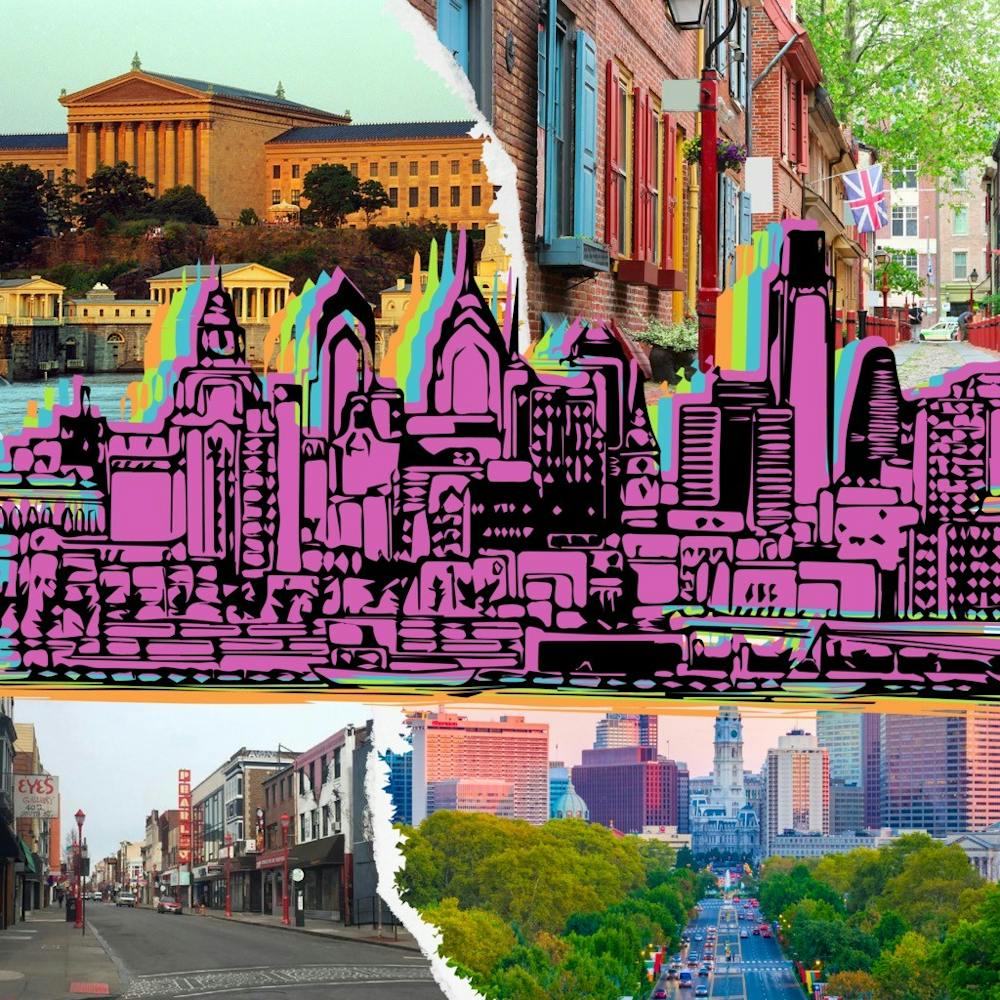When my mom and sister first started binge watching Queer Eye two years ago, I cordially rejected their invitation to join. I found makeover shows to be overrated, and always preferred a fast–paced investigative drama or an Arrested Development–esque comedy sitcom to pass the time. Nonetheless, when I eventually joined them on the couch to tune into a QE episode, I was hooked.
There’s a lot to love about the Netflix reality show. Queer Eye’s first few seasons were based in the Deep South: first Atlanta, Georgia, and then Kansas City, Missouri. Much of the plot focused not just on the individual makeovers, but also on the empathy and understanding that can occur when people from vastly different cultures sit down over a cooking lesson or a world–class haircut.
Season five, though, hit home for a different reason. Filmed in Philadelphia and the surrounding area, the season focuses less on the cultural exchange between twangy Southerners and the metropolitan Fab Five, and more on the individuals’ stories. From a formerly–homeless community program leader to an 18–year–old climate activist, each hour–long episode is filled with character development of all stripes.
As much as I followed the trials and tribulations of each new character as I tuned in this season, however, my mind couldn't help but wander onto something else as I curled up to binge–watch. I miss Philly. Like, a lot. Throughout season five, the moments that really caught my eye were the sentimental and beautiful pre–pandemic scenes of the city I now call home.
The premise of Queer Eye is simple: four incredibly talented and tasteful gay men (and one “non-binary fairy parent,” as the show’s Jonathan Van Ness describes himself) take on the project of fixing up an unexpecting, regular person’s life. Often the “heroes”—the show’s term for the “Fab Five’s” fixer–upper clients—are sweet and selfless people, too caught up in attending to others to practice self–care and truly learn to love themselves. In addition to the incredible home makeover and brand new wardrobe gifted to the hero at the end of the episode, the real kicker is the hero’s tear–jerking emotional introspection, often led by Karamo Brown, the show’s “Culture” expert.
In episode five, viewers meet Abby Leedy, an 18–year–old activist who is part of the Sunrise Movement, a coalition of young people fighting against the impending climate crisis. Abby is anxious and tightly–wound, dedicating all of her time to Sunrise and none to herself. The Fab Five greet Abby at Sunrise Philadelphia’s communal rowhouse, where young climate activists sleep, cook, and work together.
There was something nostalgic to me about Abby’s house. Tucked away on a quiet, leafy street, its multi–level colonial facade and covered porch reminded me of the slightly battered but endearing student homes that line Spruce and Pine Streets. One of my favorite things about Philly is the juxtaposition between its bustling nature as America’s sixth largest city and its grand, old historical architecture (see under the University Family Fun Center nestled 10 feet away from 100+ year–old Colonial rowhouses). My own memories of Beige Block afternoons and sunset watching from friends' roofs resurfaced as Abby gave Bobby Berk, the home decor expert, a tour of Sunrise’s headquarters. Noted: the Sunrise house was not littered with Solo cups and Allegro Pizza boxes. So there is one difference.
Episode eight, “Father Knows Fish,” takes the Fab Five to the Italian Market: ten blocks of open–air stores and restaurants that run along Ninth Street. The episode’s hero, Marcos Tiacopilco, is a husband, father, restaurant owner, and immigrant from Puebla, Mexico. The Fab Five remodels Marcos’ restaurant, Alma del Mar, and teaches him new dishes to bring into his repertoire. Karamo also mediates a heart–wrenching conversation between Marcos and his oldest daughter about their strained relationship due to the pressures of being the eldest child of immigrants.
Many of the episodes play on themes of the “American Dream,” which I (along with many others), don't really buy into as any sort of attainable ideology. However, that’s not to say that the storyline isn't moving and real. Marcos and his family are an emblem of another part of Philadelphia I hold near and dear to my heart. I see it in the dimly lit dim sum restaurants of Chinatown, the Jewish delis that remind me of my own childhood meals, and the mom and pop Latnix eateries like South Philly Barbacoa. A city that was the birthplace of a white, male nation is now indisputably a city of immigrants. Like the granite 1960s office buildings that border revolutionary–era homes, Philadelphia’s people represent the stitching together of past and present, old and new. The Fab Five’s makeover of Marcos was just one more example of the ever–changing narrative of Philadelphia’s growth.
The rest of the season has assorted dashes of Philly pride as well. In episodes six and nine, Antoni Porowski, the show’s culinary connoisseur, takes our heroes to Crybaby Pasta and Pizzeria Beddia, respectively, two Penn bucket list restaurants. The cast is spotted dipping in and out of posh storefronts in Rittenhouse, strolling down the brick–lined streets of Fishtown, and in episode four, driving around a deteriorating North Philly with the episode’s hero, Tyreek Wanamaker.
It would be a lie to say that Queer Eye isn’t a fanciful and fun version of what life can be, complete with a free head–to–toe makeover and home remodeling. But, the show is also raw, emotional, and real. It shows the city’s beauty, and also its pain. As the show labels itself, this season was “more than a makeover,” it was a window into Philadelphia and the people that live, breathe, and grow along with it.

